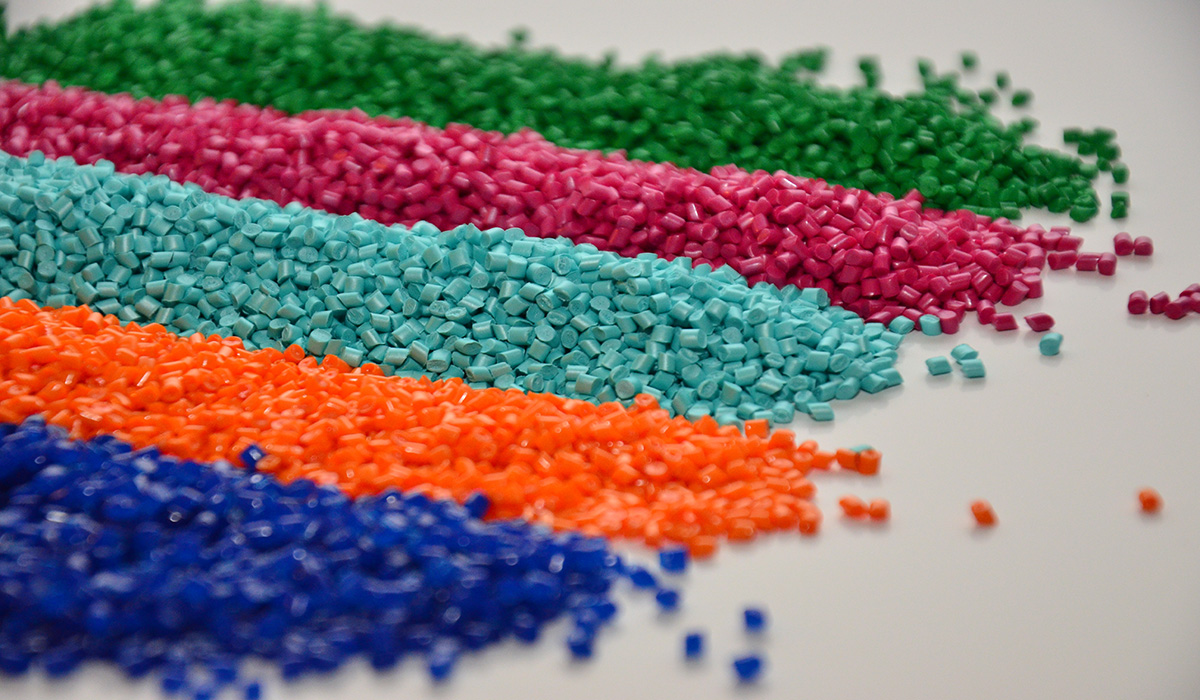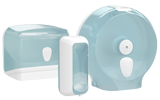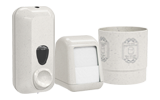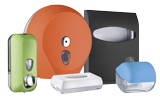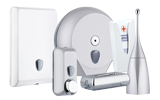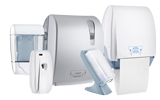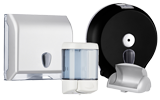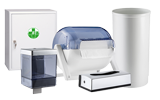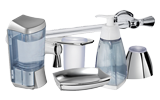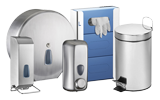Abbreviations such as ABS or PP often represent an unknown factor making the material composition of a product difficult to understand. But what are the characteristics of these elements? What are the main types of plastics used today?
We try to clarify by summarizing the main points of some of the best-known materials used to create dispensers and other accessories for the bathroom and hygiene.
Let’s start with ABS, an acronym for Acrylonitrile Butadiene Styrene, a rather common and widely used amorphous thermoplastic polymer.
Each monomer, i.e. each individual part of its composition, has a specific characteristic: acrylonitrile adds thermal and chemical resistance to the final compound as well as a certain hardness, styrene above all brilliance but also malleability for better processing and finally butadiene increases the final strength and impact resistance. It is widely used in the automotive industry, in the production of electronic appliances, toys and musical instruments.
It is the material of choice for products made by extrusion from molds such as dispensers.
PP, polypropylene, crystalline thermoplastic material extremely resistant from a chemical point of view, remains intact in contact with different acids and chemical agents and also at different temperatures. However, it is poorer than ABS in terms of mechanical resistance, therefore it is more fragile and less resistant to impact, trauma, rubbing and traction.
Thanks to its high resistance to chemical agents, it is widely used in chemical and petrochemical companies.
The same goes for polyvinyl chloride (PVC), excellent resistance to chemical and temperature agents, less so to mechanical ones. It is therefore widely used in the construction of tanks and containers, especially in cases where the content is then chemically aggressive or potentially harmful, PVC like PP will give these objects excellent resistance and durability over time.
PET, Polyethylene Terephthalate, is also widely renamed and used, it has excellent mechanical resistance and is particularly suitable for the production of high precision objects. For this reason it is widely used in the biomedical, engineering and food industries for the construction of valves, gears and constituent details.
These materials can then be mixed with other plastic materials in smaller quantities to add resistance, hardness or gloss depending on the product to be created.
As we have seen, ABS is widely used in the construction of dispensers due to its durability over time, its excellent resistance to both mechanical and chemical shocks which give the final product a wide application, easy cleaning and consequently a greater level of hygiene.
As we have seen, not all plastics are the same or even of the same quality. In making its products, Mar Plast uses top quality plastic materials to obtain a high and long-lasting quality standard.
In a future article we will see how the various types of plastic are disposed of correctly, so stay tuned with us to learn more about correct disposal!

STAY UPDATED!
Sign up to our newsletter
"*" indicates required fields
By clicking on “Subscribe” you confirm that you have read the information on privacy.

